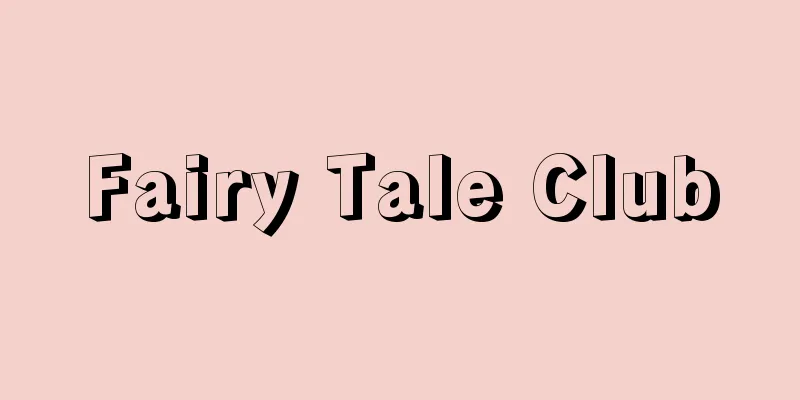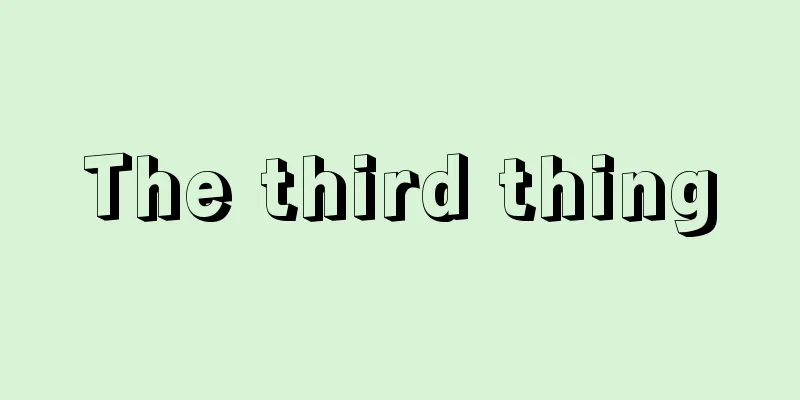Non-human

|
〘Noun〙① Buddhist term. Meaning not human, a demon or god that has assumed the shape of a human. Also called demons or asuras, heavenly dragons and eight kinds of demons, yakshas, or evil spirits. ※Ryōiki (810-824) - "There were seven non-humans with the heads of bulls and the bodies of humans." [Lotus Sutra - Devadatta Chapter]② A criminal. ※Shoku Nihon Kōki - Showa 9th year (842), July Koshin: "The criminal Tachibana no Yasunari was stripped of his two real surnames and given two non-human surnames . "③ A hermit. Also a priest. ※Hōshinshū (around 1216?) 2 - "I will become a non-human and devote my life to such pursuits, so that I may take over the world."④ A very poor person. A person living in poverty. A beggar. ※Gumei Hatsushinshu (around 1213) "Begging for money is not given, so it is resented and disgusting"⑤ A term for the outcast class in the Middle Ages and early modern times. In the Middle Ages, it was used as a general term for people who were socially looked down upon. In the early modern and Edo periods, as part of the Shogunate and feudal domain system's control over the people, they, along with eta, were placed in a lower class than the samurai, farmers, artisans, and merchants, and suffered severe discrimination. They were not allowed to engage in productive labor, and made a living by entertainment and begging, and performed odd jobs in prisons and execution grounds. They were under the control of the outcast head, and mainly lived in outcast huts. In 1871 ( Meiji 4 ), both the status and the term were legally abolished by a proclamation from the Dajokan, but unfair discrimination has not been eradicated to this day. →Eta and Buraku Liberation Movement. ※Kasuga Shrine Records - Nakatomi Suketani Chronicles, Bun'ei 2 (1265), October 25th "Please remove the deer . Since this is a dead person, it is difficult for non-humans to be treated either." Source: The Selected Edition of the Japanese Language Dictionary About the Selected Edition of the Japanese Language Dictionary Information |
|
〘名〙① 仏語。人間ではないの意で、鬼神などが、かりに人に姿を変えたもの。また、鬼神・阿修羅とも、天龍八部・夜叉・悪鬼などともする。※霊異記(810‐824)中「七人の非人有り、牛頭にして人身なり」 〔法華経‐提婆達多品〕② つみびと。ざいにん。※続日本後紀‐承和九年(842)七月庚申「罪人橘逸勢、除二本姓一、賜二非人姓一」③ 世捨人。また、法師。僧。※発心集(1216頃か)二「身を非人に成て彼三昧の事に命を続で後世をとり侍らん」④ 非常に貧しい人。生活困窮者。乞食。※愚迷発心集(1213頃)「乞食非人のもんに望むには給賜せずして悪み厭ひ」⑤ 中世および近世における賤民身分の称。中世では社会的に賤視された人々の総称として用いられた。近世、江戸時代には幕藩体制の民衆支配の一環として、えた(穢多)とともに士農工商より下位の身分に位置づけられ過酷な差別を受けた階層。生産的労働に従事することは許されず、遊芸や物貰いなどで生活し、牢獄や処刑場での雑役などの役務に従事した。非人頭の支配に属し、主として非人小屋に居住した。明治四年(一八七一)太政官布告によって、法制上は身分、呼称とも廃止されたが、現在に至るも不当な差別は根絶されていない。→穢多・部落解放運動。※春日社記録‐中臣祐賢記・文永二年(1265)一〇月二五日「如レ鹿者をこそ取退候へ、此は死人にて候へは、非人も難治之由令レ申歟」
出典 精選版 日本国語大辞典精選版 日本国語大辞典について 情報 |
>>: Vinylon - Biniron (English spelling) vinylon
Recommend
Letter on Tolerance - Library on Tolerance
...This allowed Protestant denominations such as ...
Sesshu
A Zen monk and painter-monk from the Muromachi pe...
Gozasso (English spelling) Wǔ zá zǔ
A collection of essays by Xie Zhaozhuo (1567-1624)...
《L'histoire politique de la Révolution française》 (English notation) Lhistoire politique de la Revolutionfrancaise
…When the Department of French Revolutionary Hist...
Underground power transmission - underground
A method of transmitting electricity using power c...
Fuchs, K.
…An espionage case that occurred in the United St...
Communist Party of Korea
Since the First Korean Communist Party was founded...
Falling - Falling
〘Jira 5 (4)〙① To fall on something. To fall and ge...
Koszalin (English spelling)
A city in northwest Poland, in Zachodnyo-Pomorskie...
Monolithicism - monolithic
...(3) The revolutionary strategy was based on th...
Subrogation - subrogation
In non-life insurance, when an insurer compensates...
Castor bean - Castor bean (English spelling)
Also known as castor bean (illustration). A woody ...
Dosan Line
The name of the track of the Shikoku Railway Comp...
Panopticon - Panopticon (English spelling)
A method of prisoner monitoring facilities devise...
Manager - Chief
...In the case of Jiangnan, where rice cultivatio...









